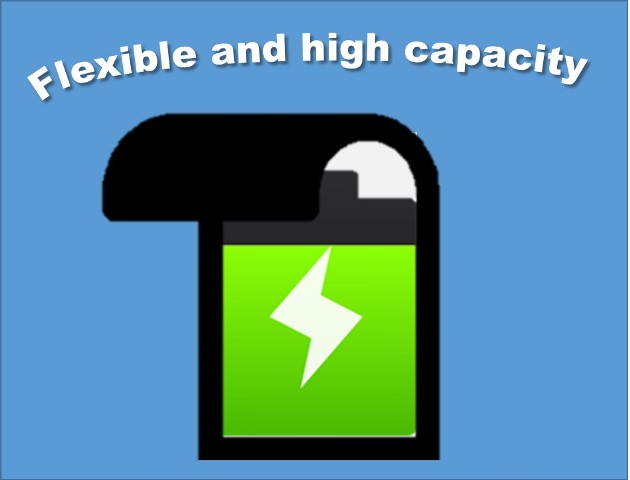Develop a flexible and rechargeable battery 10 times more powerful
The boom in flexible electronics requires cost-effective batteries with good mechanical and electrochemical performance. Based on this, a team of scientists from the University of California, San Diego and the Californian company ZPower have developed a flexible, high-capacity rechargeable battery, based on silver-zinc oxide (AgO-Zn) and polymers. But the most innovative aspect of this battery is that, in addition to the fact that it is flexible, it has an energy density between 5 and 10 times greater than those currently developed; this was made known by its developers in the December 7 issue of Joule magazine.

New generation of flexi batteries. Source: image designed by the author
This battery has a capacity of 50 milliamps per square centimeter at room temperature, which is 10 times larger than the capacity of a conventional lithium battery currently available on the market, so for a standard size battery it would deliver between 5 and 10 times more energy. This is achieved because the battery has a much lower impedance, and the lower this property is, the better the performance of the battery against discharge.
Another advantage of this battery is its innovative manufacturing process, which requires less demanding conditions compared to other technologies that require assembly under totally sterile or vacuum conditions; this battery can be assembled under normal laboratory conditions, which significantly improves manufacturing conditions, making this method accessible and scalable.
Elastomeric compounds were used to manufacture the battery, and the current collectors, electrodes and separators were manufactured using a high-performance silk-screen printing process, layer by layer, and vacuum-sealed in a stacked configuration. The batteries are customizable to meet any size and capacity.
The exceptional energy density shown by this battery is due to its silver-zinc oxide (AgO-Zn) chemistry. But AgO has never been used in a screen-printed battery before, because of its instability, causing it to degrade rapidly; but by testing various solvents and binders, researchers were able to come up with a formulation that made AgO viable for battery printing. Another exceptional feature, thanks to this formulation, is that the batteries can be printed in seconds once the screen-printing inks are prepared and could also be printed in a roll process, which would increase production speed and make the process industrially scalable.

New smart devices require flexible high-capacity batteries. Source: Wikimedia Commons.
This could be the next generation of flexible batteries, with the aim of achieving cheaper and faster charging devices, needed for 5G devices and in devices that require customizable and flexible form factors.
Thanks for coming by to read friends, I hope you liked the information. See you next time.

This post has been manually curated by @bala41288 from Indiaunited community. Join us on our Discord Server.
Do you know that you can earn a passive income by delegating to @indiaunited. We share 80 % of the curation rewards with the delegators.
Here are some handy links for delegations: 100HP, 250HP, 500HP, 1000HP.
Read our latest announcement post to get more information.
Please contribute to the community by upvoting this comment and posts made by @indiaunited.
Many thanks!